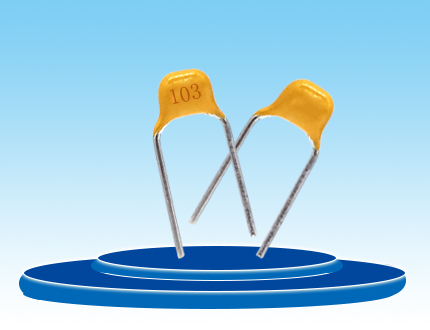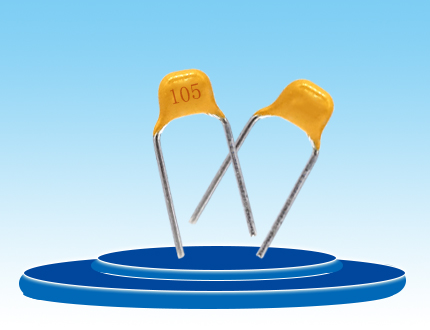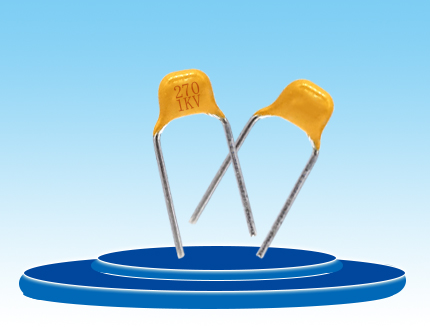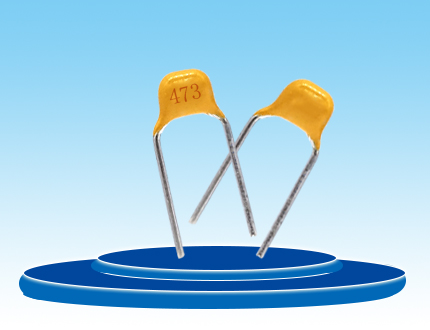1. Detection of negative temperature coefficient (NTC).
(1) measuring the nominal resistance value Rt the method of measuring NTC thermistor with multimeter is the same as the method of measuring ordinary fixed resistance, that is, the actual value of Rt can be directly measured by selecting the appropriate electrical barrier according to the nominal resistance value of NTC thermistor. However, NTC thermistor is very sensitive to temperature, so the following points should be paid attention to when testing: A Rt is measured by the manufacturer when the ambient temperature is 25℃, so when using multimeter to measure Rt, it should also be carried out when the ambient temperature is close to 25℃ to ensure the reliability of the test. B the measured power shall not exceed the specified value to avoid the measurement error caused by the thermal effect of current. C pay attention to correct operation. When testing, do not pinch the thermistor by hand to prevent the human body temperature from affecting the test.
(2) Estimate the temperature coefficient αt First, measure the resistance value Rt1 at room temperature t1, then use the electric iron as the heat source, close to the thermistor Rt, measure the resistance value Rt2, at the same time, measure the average temperature T2 on the surface of the thermistor RT with a thermometer, and then calculate.
2. Detection of PTC.
When testing, use a multimeter R×1, which can be divided into two steps: a, normal temperature testing (indoor temperature is close to 25℃); Measure the actual resistance value of PTC thermistor by contacting two probes with two pins, and compare it with the nominal resistance value. If the difference between the two values is within 2 ω, it is normal. If the difference between the actual resistance and the nominal resistance is too large, it means that its performance is poor or damaged. B heating detection; On the basis of normal temperature test, the second test-heating test can be carried out. A heat source (such as an electric soldering iron) is placed close to the PTC thermistor to heat it, and a multimeter is used to monitor whether its resistance value increases with the increase of temperature. If so, it means that the thermistor is normal; if there is no change in resistance value, it means that its performance deteriorates and it cannot be used any longer. Be careful not to make the heat source too close to the PTC thermistor or directly contact the thermistor to prevent it from being burnt.
3. Detection of piezoresistors.
Measure the positive and reverse insulation resistance between the two pins of the varistor with the R×1k block of the multimeter, which is very large; otherwise, the leakage current is large. If the measured resistance is very small, it means that the varistor is damaged and cannot be used.
4. Detection of potentiometer.
When checking the potentiometer, first turn the knob to see if the knob rotates smoothly, whether the switch is flexible, whether the "click" sound is crisp when the switch is turned on and off, and listen to the sound of friction between the internal contact point of the potentiometer and the resistor. If there is a "rustling" sound, the quality is not good. When testing with a multimeter, first select the appropriate electrical blocking position of the multimeter according to the resistance value of the potentiometer to be tested, and then test according to the following method.
A measure both ends of "1" and "2" with the ohmmeter, and the reading should be the nominal resistance value of the potentiometer. If the pointer of the multimeter does not move or the resistance value is quite different, it indicates that the potentiometer has been damaged. B check whether the movable arm of potentiometer is in good contact with the resistor. Measure both ends of "1" and "2" (or "2" and "3") with the ohmmeter, and turn the rotary shaft of potentiometer counterclockwise to the position close to "off". At this moment, the smaller the resistance value, the better. Rotate the handle clockwise and slowly, the resistance value should gradually increase, and the pointer in the meter head should move smoothly. When the important official handle is turned to the extreme position "3", the resistance should be close to the nominal value of the potentiometer. If the pointer of the multimeter jumps during the rotation of the shaft handle of the potentiometer, it means that the movable contact has poor contact.
5. Detection of photosensitive resistance.
A cover the light-transmitting window of the photosensitive resistor with a black paper sheet, and the pointer of the multimeter is basically still, and the resistance value is close to very large. The larger the value, the better the performance of the photoresistor. If this value is very small or close to zero, it means that the photoresistor has been burnt out and damaged, and can no longer be used. B aim a light source at the transparent window of the photoresistor. At this time, the pointer of the multimeter should swing greatly, and the resistance value is obviously reduced. The smaller the value, the better the performance of the photoresistor. If this value is very large or even very large, it means that the internal open circuit of the photosensitive resistor is damaged, and it can no longer be used. C align the light-transmitting window of the photoresistor with the incident light, and shake it on the upper part of the light-shielding window of the photoresistor with a small black paper sheet to make it receive light intermittently. At this time, the multimeter pointer should swing from side to side along with the shaking of the black paper sheet. If the pointer of the multimeter always stops at a certain position and does not swing with the shaking of the paper, it means that the photosensitive material of the photosensitive resistor has been damaged.
1. Detection of negative temperature coefficient (NTC). (1) measuring the nominal resistance value Rt the method of measuring NTC thermistor with multimeter is the same as the method of measuring ordinary fixed resistance, that is, the actual value of Rt can be directly measured by selecting the appropriate electrical barrier according to the nominal resistance value of NTC thermistor. However, NTC thermistor is very sensitive to temperature, so the following points should be paid attention to when testing: A Rt is measured by the manufacturer when the ambient temperature is 25℃, so when using multimeter to measure Rt, it should also be carried out when the ambient temperature is close to 25℃ to ensure the reliability of the test. B the measured power shall not exceed the specified value to avoid the measurement error caused by the thermal effect of current. C pay attention to correct operation. When testing, do not pinch the thermistor by hand to prevent the human body temperature from affecting the test.
 简体中文
简体中文





